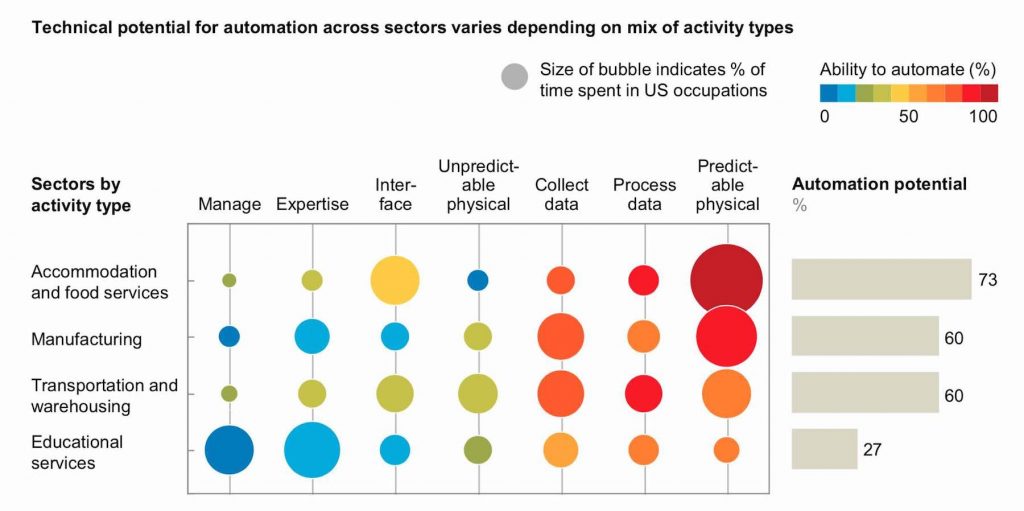Technology in Education: The Future Is Here
Will AI replace teachers? Or will it replace students?
In recent years, artificial intelligence, or AI, has made a very smooth transition from being on the verge of science fiction straight to our everyday lives. Many professions will cease to exist or will be dramatically influenced by the development of robotics. Education is no exception: it is also getting increasingly automated with the emergence of special mobile apps, electronic testing, and online education programs. This leads to a question: What impact will the developing AI in education have on teaching? Will it replace teachers and take their jobs? It looks like we already know the answer.
McKinsey Global Institute (MGI) has recently performed extensive research on the job market trends in the coming decades. The researchers divided the occupations into categories and evaluated their automation potential.
As it turns out, jobs in educational services, such as teachers, have the lowest automation potential, having scored just 27%. In comparison, the top 3 categories, namely accomodation and food services, manufacturing, and transportation, are expected to be affected by automation by 73, 60 and 60% respectively.

Indeed, it is hard to underestimate the role of teachers. Teaching is a complex and multilayered process: educators adapt to their students’ needs and backgrounds to help them master new concepts and skills, develop communication abilities, strengthen emotional intelligence, and so much more.
Instead of stealing jobs from teachers, technology in education will most likely become a tool, helping educators provide individualized instruction and focus on where they are needed most. Research shows that individualizing education is the key to better learning outcomes. And here’s the real challenge that makes personalising critical.
The automation trend will lead to a growing number of jobs requiring higher levels of education. This is not unexpected: according to the National Center of Education Statistics, college enrolment numbers are projected to increase by 2 million from 2018 to 2026 (source). At the same time, the current level of college readiness in math is as low as just 26% and reported to have declined recently (source).
Thus, the real challenge reveals itself: in order for current students to be able to compete for jobs in an AI- and technology-enabled economy, educators will be required to boost the levels of college readiness in the coming years.
It’s not about technology stealing jobs from teachers, it’s about technology stealing jobs from the students.
